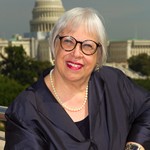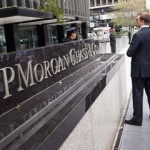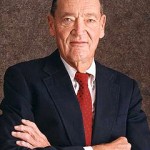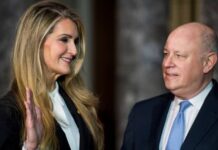
Advocates for passive investing, mutual fund fee disclosure, fiduciary reform and the critics of the nation’s poorly designed $10 trillion 401(k) and retirement industry gained some high ground in this critical debate last night (April 23, 2013) in the PBS Frontline segment, “The Retirement Gamble.”
Host and co-writer Martin Smith used case studies of different pre- and post-retirees to illustrate the harsh reality and their individual stress as they faced their own individual retirement crises. In the process, Smith relied on some powerful interviews with former Vanguard CEO John Bogle, who drove home the hard mathematics of why compounding fund fees indisputably tilt the total returns over time towards the fund companies and their portfolio managers, not individuals.
The show also re-ignited the fiduciary question by showing the Congressional testimony of the DOL’s Assistant Secretary, Employee Benefits Security Administration Phyllis Borzii on the need for a fiduciary standard.

The DOL first introduced a fiduciary standard proposal in 2010 and it was viciously opposed by the financial services industry. Boston University Finance Professor Zvi Bodie also noted the negative impact of fees and the benefits of passive investing over active management.
Prudential and JP Morgan Now Have a PR Problem
In the process of demonstrating the negative impacts of fees and the conflicts-of-interest due to the lack of a fiduciary standard, officials of Prudential and J.P. Morgan suffered in their responses. This is now the cause of a few major PR problems at these multi-billion financial firms.
In the case of Prudential, a prime provider of 401(k) recordkeeping and fund products and services, the interview showed that a top retirement executive did not know of any academic or industry studies which showed the benefits of passive versus active management. This is surprising since it has been the topic of scores of research and industry studies for decades.
In the case of JP Morgan, a “too-big-to-fail” investment bank, one of their top retirement executives visibly stumbled when asked the question about why working with a fiduciary, not a broker, would benefit individual investors. After looking uncomfortable, and saying it all depends on an individual’s circumstances, the executive just sputtered “It’s complicated” in response to the fiduciary question.

While the law behind the fiduciary standard may be complicated, it is not complicated in practice. The reality is that this simple act of leveling the playing field, in terms of disclosing what motives and money drive investment recommendations, would turn the financial services industry on its head if adopted. This is because equal information between average investors and financial professionals would upset revenue sharing deals and the perceived authority of the broker.
Key Facts from the Frontline Segment
Among the facts brought out by this important Frontline segment were:
–Assuming a 75 market return, an annual 2% fund fee over 50 years would produce a loss of two-thirds of any market return. This means the investors gets about 30% of the return, while the rest is diverted to the fund company (John Bogle example.)
–About 85% of advisers are brokers, not fiduciaries, and are governed by the broker-dealer “suitability” standard. This means 85% of advisers are salespeople who have the very low hurdle of “suitability” to clear in order to push products. Smith noted that he would not want to buy an investment that was just “suitable.”
–Today, about 60 million people have 401(k)s. In the 1970s, about 46% of workers had pensions. There is now about $10 trillion in retirement assets in the U.S.
–A number of the people profiled in this segment, especially the three teachers, were sold annuities, which they clearly did not understand. In the interviews, the people said they were confronted with a 10% surrender charge and low returns, neither of which they understood were in their contracts.
–Passive investing beats active management. This is a fact understood by the vast majority of investment professionals (except apparently by a top executive of Prudential’s retirement division.) This was reinforced by Professor Bodie and

John Bogle. The show deserves kudis since it got into the political role of active management (it drives fees and keeps people hoping for an above-market return.) Unfortunately, the Frontline segment did not mention ETFs and why they were not a major part of 401(k) plans. This would have been beneficial since it shows the stranglehold that recordkeepers and fund companies have on the investments now offered to millions of 401(k) participants.
–The show also deserves credit for publicizing revenue sharing. This highly controversial practice was discussed by Jason Zweig and the personal finance writer for the New York Times as being the under-the-table payments which drive product sales to unsuspecting investors.
While this Frontline segment should become a mandatory element in all 401(k) educational programs, the reality is that plan sponsors have also failed their own employees when it comes to designing and monitoring their own 401(k) plans. This indicates a lower level of care and a new type of relationship which now exists between employers and employees.
Finally, while this was a power and informative show, it covered some of the main points made in my book,

“How 401(k) Fees Destroy Wealth and What Investors Can do To Protect Themselves,” This book is available on Amazon for $15.95 and Kindle for $9.95. It is 259 pages, with six charts, a glossary and over 250 footnotes. ISBN 978-1477657997.
A video of the show can be seen online at PBS.org.










